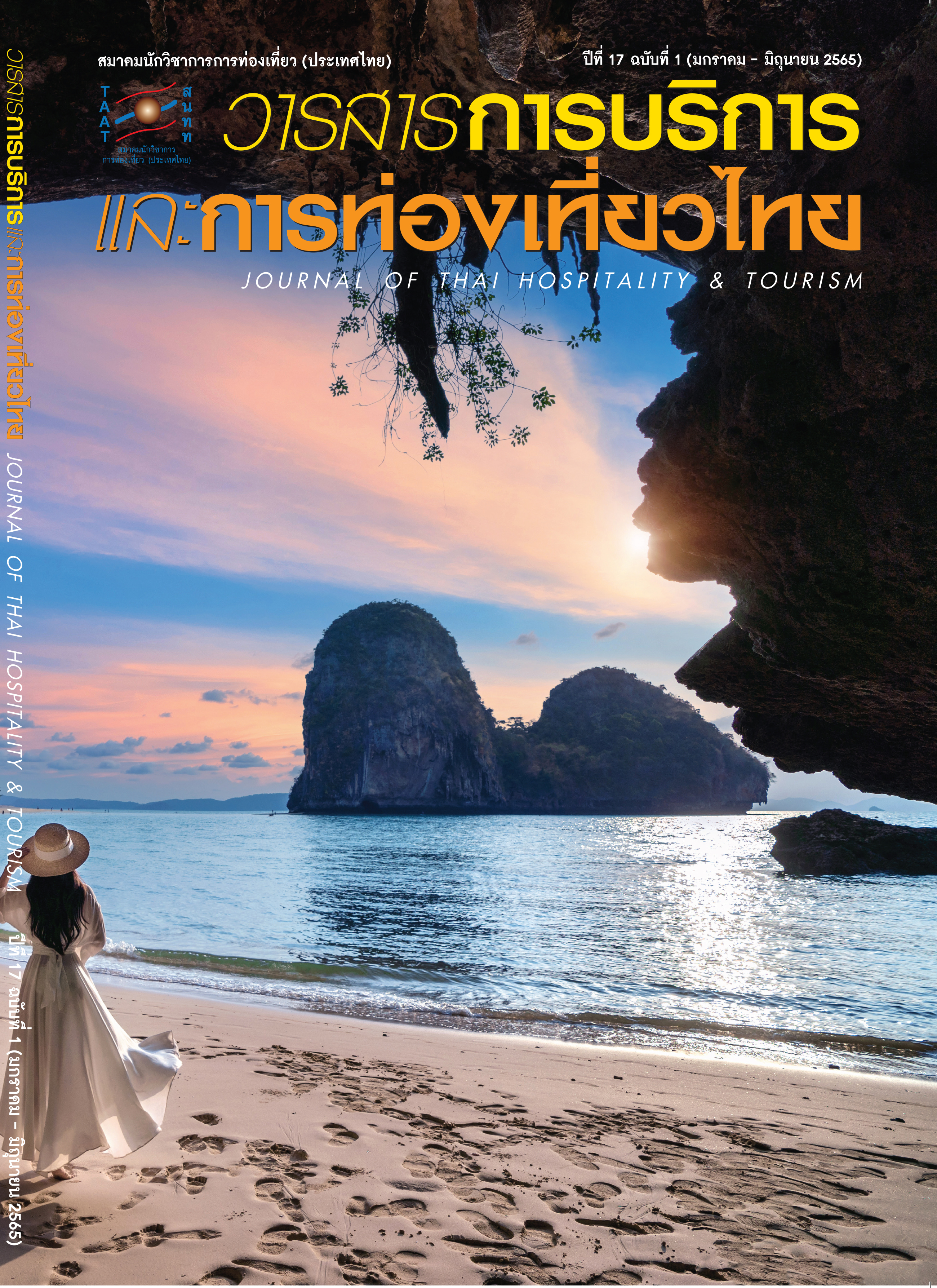Factor Affecting the Tour Companies’ Decision to Book Flight for U-Tapao – Incheon Route, South Korea at U–Tapao Airport
Main Article Content
Abstract
The objective of this study is to examine the factors that influence the decision to travel through U-Tapao Airport to South Korea. The data used in this study were collected through questionnaires from a sample group of 260 travel agents, and analyzed using descriptive statistics and logit model.
The result shows that most travel companies use the airport on average 9-12 times per month with an average of 50-99 passengers per flight. The most frequent routes are South Korea, Japan, China, Hong Kong and Macau. The decision to use the airport is influenced by the executive. In addition, 135 of the surveyed are interested in flying to South Korea from U-Tapao Airport. The researcher predicted the optimal frequency from U-Tapao to Incheon to be 8 flights per month. Marketing mix factors for personnel is the most important factor. The results of the logit model showed that the factors that could explain the probability of the travel company is decision to fly from U-Tapao to Incheon with a significant level of 0.10 are gender, age, people influencing the decision to use the airport, U-Tapao Airport usage behaviors, convenient time, flight to South Korea, product factors, price factors, promotion factors, and process factors.
Article Details

This work is licensed under a Creative Commons Attribution-NonCommercial-NoDerivatives 4.0 International License.
References
Aeronautical Radio of Thailand Ltd. (2017). Future of Aviation Industry. Retrieved from https://www.aerothai.co.th/th/aerothai-update/
Booms, B. H. & Bitner, M. J. (1981). Marketing Strategies and Organization Structures for Service Firms. In Donnelly, J. H. & George, W. R. (Eds.), Marketing of Services. American Marketing Association, Chicago.
Kotler, P. (1994). Marketing Management. Englewood Cliffs, N. J.: Prentice–Hall.
Lertkojchasie, M. (2015). Factors Affecting Consumer Choice of Thai Airways Domestic Flights. Faculty of Commerce and Accountancy, Thammasat University.
Ministry of Tourism and Sports. (2018). Tourist Statistics. Retrieved from http://www.mots.go.th/more_news.php?cid=411.
Muñoz, C., Cordoba, J. & Sarmiento, I. (2016). Airport Choice Model in Multiple Airport Regions. Journal of Airline and Airport Management, 7(1), 1–12.
Muqbil, I. (2013). Korea Visitors to Thailand: Strong Rebound After Three-year Slump. Retrieved from https://www.lookeastmagazine.com/2013/07/korean-visitors-to-thailand-strong-rebound-after-three-year-slump.
Seetanah, B., Teeroovengadum, V. & Nunkoo, R. (2018). Destination Satisfaction and Revisit Intention of Tourists: Does the Quality of Airport Services Matter?. Journal of Hospitality and Tourism Research, 2020(44), 134–148.
Serirat, S. (2009). Marketing Management. Bangkok: Diamond in Business World.
Silpcharu, T. (2017). Research and Statistic Analysis with SPSS and AMOS. Bangkok: Se-education.
Tang, C. (2014). Exploring the Potential of Hub Airport and Airlines to Convert Stopover Passengers into Stayover Visitors: Evidence from Singapore. Griffith University, Australia.


